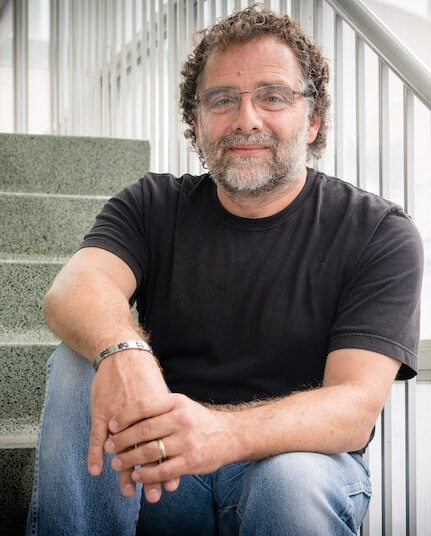Education Changemakers: Learning differently
November 01, 2013
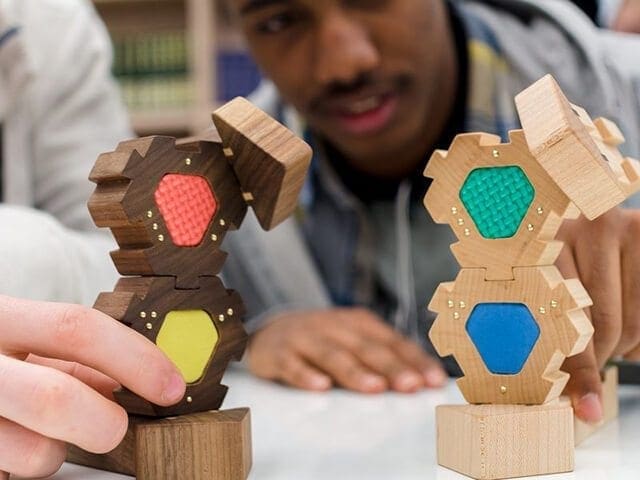
The fact that our education system is a “one-size-fits-all” model based on the industrial revolution has become a common complaint. Historically, educational institutions sought to deliver material to the most number of kids possible with the least amount of effort, much like a factory seeks to maximize outputs and minimize inputs. This invariably left behind those students who learned in different ways from the mainstream. Their voices were lost in the drive to standardize instruction.
The fact that our education system is a “one-size-fits-all” model based on the industrial revolution has become a common complaint. Historically, educational institutions sought to deliver material to the most number of kids possible with the least amount of effort, much like a factory seeks to maximize outputs and minimize inputs. This invariably left behind those students who learned in different ways from the mainstream. Their voices were lost in the drive to standardize instruction.
Recently, due to the explosion of cheap digital technologies and a deeper understanding of cognitive science and pedagogy, innovations have popped up to cater to these learners in the margins. To make use of Chris Anderson’s “long tail” metaphor, education is starting to shift away from a focus on mainstream learners, to creating learning pathways for “personalized instruction.”
As Anderson identified in his book, there is tremendous market potential in the long tail. Entrepreneurs who figure out how to tap into the large number of learners traditionally left out of the mainstream education system will do very well. In this feature, MaRS profiles eight companies from the edtech cluster in the ICE practice who have this market strategy. Many of them can use this as a wedge into a complex market and eventually achieve mainstream potential.
The mantra of personalized instruction for all types of learners, for all types of pathways to employment, has become the rallying call for many education funders such as the Gates Foundation and New Schools Venture Fund. In this sense, the margin has now become the mainstream, as administrators realize fulfilling the potential of all our students is integral to the future prosperity of the economy.
The history of technology is full of examples of products that started as devices to aid people with special needs that found mainstream success. Voice recognition, originally designed as an assistive technology for people with disabilities, is now used in most consumer electronic devices, sold as a feature of convenience.
Twenty One Toys, profiled here, founded their toy company with the goal of allowing people to feel what it would be like for blind people to communicate complex instructions. They have seen their market expand into corporate training for creativity and communication, and K-12 instructors looking for ways to teach empathy to middle school students.
Initiatives like Ryan Porter’s Raise Your Flag focuses on a market that even education professionals continually underserve: those students who graduate high school but have no interest in University or College. Roughly 45% of the students in North America will go straight to work when they graduate. 3 million students graduate from high school every year in North America creating a robust long tail that has never been tapped.
LEARNStyle holds as a core premise that all students learn differently, not just those on the “margins.” Some prefer visuals, some hands-on instruction. LEARNStyle seeks to share instructional strategies with teachers who are used to the “one-size” approach. What started as a way of differentiating instruction for “special education” students has been recognized as a solid pedagogical strategy for all teachers.
Squag and Remediation Plus tend to focus on students with identified “learning disabilities” such as dyslexia or autism, but have found market opportunities that extend far beyond those constraints. The YMCA Academy, which has piloted both products, is starting to see interest in their curriculum, initially designed for students with learning disabilities, from independent schools in the United States looking for a competitive advantage in the rapidly growing Charter school market.
Heliotrope is a learning game that combines personal assessment and co-creativity to foster 21st century skills such as self-knowledge, empathy, collaboration, and appreciation of diversity. It is currently used internationally in schools and in professional development and a version specifically for virtual team collaboration is in the works. Keen For Learning has created a solid instructional framework to engage boys in the classroom, but is finding a wider market resonance with parents struggling to understand their boys.
In a modern economy, where Canada’s strength is defined by our intellectual outputs rather than how many widgets we make, it makes sense to maximize the intellectual capital of all our students. It will require a big shift in the education system, and entrepreneurs like these are making sure it happens.
Keen for Learning
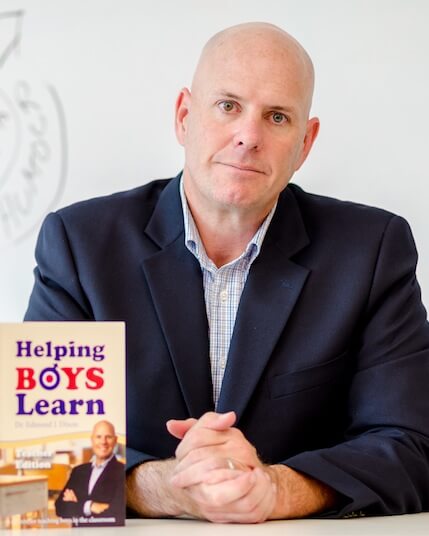
1. How does your venture help students with learning differences or learning disabilities?
Boys make up the vast majority of students with learning disabilities. The “6 Secret” focus of the Helping Boys Learn approach uses neuroscience research and on the ground experience with more than 50,000 students to give teachers strategies which allow every boy to reach his potential in the classroom.
The 6 Secrets are:
- Movement
- Game
- Humour
- Challenge
- Mastery
- Meaning
They address directly the needs of many students who struggle in the classroom, because these students are often “experiential” learners who need a hands-on approach to learning. Because the 6 Secret strategies use modalities that have been neglected in traditional teaching approaches, they become effective tools for teachers to differentiate instruction to boys.
Another powerful aspect of our approach is the involvement of parents in helping their sons develop skills and confidence at home, allowing them to be more engaged and successful in school.
2. What is the biggest challenge you face as an entrepreneur working in this space?
Education is a very difficult space to bring about change. Entrenched interests (both public and private) and the conservative nature of much education mean that the evolution of improved teaching practice has often been slow. Tight budgets complicate the issue. Happily, technology has enabled more choice for parents, students, and teachers and is driving the need to differentiate instruction effectively. It has also allowed us to have a platform to share effective practice beyond the geographical confines that would have hindered growth in the past.
3. What do you see as the next big area of growth for your company?
Until now, our focus has been primarily on educators. With the publication of Helping Boys Learn – Parent Edition we are able to support those individual parents who often feel most at sea in trying to help their sons learn. Because the parent market in North America is so large and this pain is so acute, and because our business model will deliver relief through online means, we feel that growth can be very strong. The key will be establishing myself as an expert in boys learning with practical solutions for every parent and teacher!
Squag
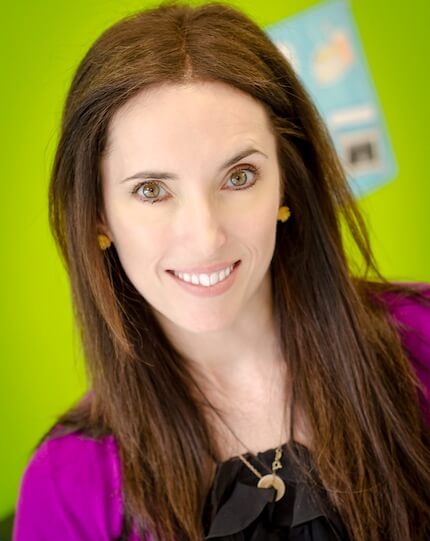
Squag addresses the inner life of kids with autism and other learning differences. Many of these kids spend most of their day coping in environments that are not conducive to the way they communicate. We’ve created a safe online space where kids can be comfortable to explore their interests, build original ideas about themselves and ultimately self-confidence that they can take with them into their daily lives.
2. What is the biggest challenge you face as an entrepreneur working in this space?
Funding (and that’s a big one!). Squag exists in a hybrid space and is difficult to explain unless you understand the perspective of the user. Difficult to explain means difficult to fund. So we’re working hard to get better at that.
3. What do you see as the next big area of growth for your company?
Researchers are starting to understand that the unique social/emotional experiences of kids with learning differences are crucial to developing the treatment and services to support them. Squag allows kids to advocate for themselves and have their voices be heard. I think this is a new idea; that it takes all kind of experts (parents and kids are experts too!) to problem solve and create sustainable support for people who learn and communicate differently.
Remediation Plus
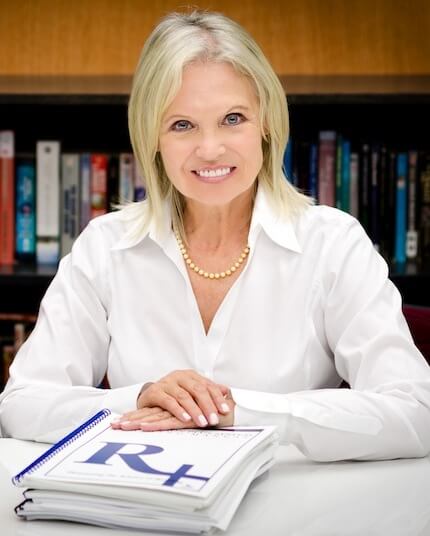
1. How does your venture help students with learning differences or learning disabilities?
Remediation Plus (R+) is a complete system to test, analyze and successfully remediate language learning disabilities. A success rate of 95% is consistently achieved by the R+ system. Ten percent of Canadian students have learning disabilities. Of these, 80% have difficulty reading, spelling and show difficulty with fluency and precision. Early reading intervention alleviates failure in most individuals.
R+ is the only language system embodying all the essential principles of scientific reading research. This translates into a compelling, effective and powerful intervention. The R+ training program provides teachers with the tools for effective reading intervention, effective at all stages of education. However, results are best at the earliest ages. R+ is not available through universities. It is a proprietary program that trains teachers and/or parents to help kids who struggle to learn. R+ achieves success for children where other programs have failed. R+ is a powerful and exciting solution to help the L.D. population as well as students with a garden-variety reading lag.
2. What is the biggest challenge you face as an entrepreneur working in this space?
It is not unusual for innovators to be exasperated that their powerful and important ideas are not quickly adopted. The R+ system has clearly demonstrated that it can significantly raise language proficiency in “at risk” children in school boards and First Nations schools. However, for all but a few there is a major reluctance by educators, directors of education, teachers colleges and other bureaucracies to accept these scientific findings. The educational systems simply must become more accountable to these students. The label “learning disability” has become an excuse, rather than an opportunity to discover how young readers learn best.
Also frustrating is the lack of investor capital to accelerate training of teachers and promote R+ to teachers, school boards and parents.
3. What do you see as the next big area of growth for your company?
The next level requires expanding availability of R+ to web based training and digitizing the 85 systematic one hour lesson plans. This will significantly increase access to the R+ solution to teachers around the world. This is what we are aiming for.
The U.S. continues to be obsessed with “results” and the R+ system will continue to dramatically deliver improved results. Teachers everywhere want desperately to help their students and want tools that are more effective. We need to get this message out to the bureaucracies, universities, school boards and especially parents!
The R+ solution is a better mouse trap: it incorporates the old theories of Samuel Orton and Anna Gillingham as well as the new discoveries from the NICHD U.S. funded a 35 year longitudinal study on “how do children learn to read?”
YMCA Academy
1. How does your venture help students with learning differences or learning disabilities?
Over the last eleven years, The YMCA Academy has designed and honed its curriculum, pedagogical approaches, and uses of technology, to fully support students with learning disabilities. By focusing on student assets through teaching styles and technology, we enable students to succeed where they have previously only experienced failure. At the same time, we teach students to advocate for their own learning styles, and to use assistive technologies to accommodate their disabilities. We wish to make our curriculum available to schools, whether independent schools in Canada or charter schools in the USA, on a subscription basis, while at the same time providing our guidance and expertise in the setting-up of their programs. Employing the Search Institutes’ 40 Developemental Assets for Adolescents research tool, we have demonstrated the efficacy of our program.
2. What is the biggest challenge you face as an entrepreneur working in this space?
Our biggest challenge is technical in nature — finding a LMS that is robust and fully searchable, that can bring our learning artificts together into a variety of meaningful units. We have yet to find one that employs “tags”, is fully searchable, and allows for ease of access while at the same time protecting the Intellectual Property we have developed.
3. What do you see as the next big area of growth for your company?
The burgeoning Charter School movement in the USA, which is increasingly focusing on the LD market.
Raise Your Flag
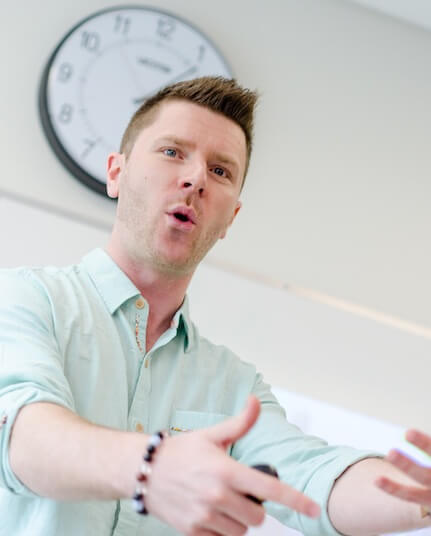
1. How does your venture help students with learning differences or learning disabilities?
We help students who are not going to university or college get super excited about their post-secondary career paths. We give them the exact tools they need to go from high school into the workforce with a plan, purpose and perspective.
Equally as important, we help educators identify student needs and give them tools to assist their students make a successful transition from high school.
2. What is the biggest challenge you face as an entrepreneur working in this space?
Our biggest challenge is working with education to acknowledge the need for highly specialized programming for work-bound students who are currently being severely under-served.
3. What do you see as the next big area of growth for your company?
The combination of the university/college value proposition weakening, the “un-college movement” and de-centralized purchasing of district and school resources, is paving the way for massive adoption of alternative post-secondary pathway planning programs. As a result, we see the adoption of Raise Your Flag growing exponentially in the coming months.
Note: Raise Your Flag is part of JOLT’s Fall 2013 cohort – check out their profile here.
Heliotrope
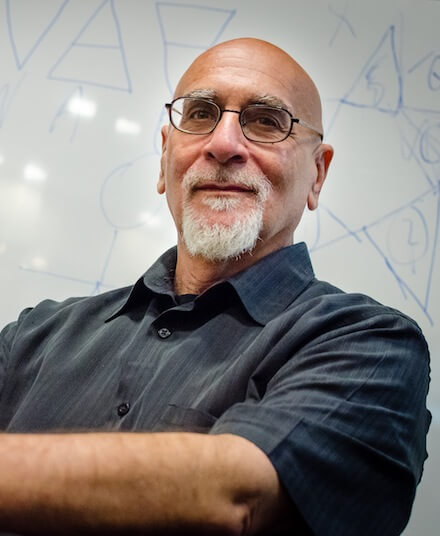
1. How does your venture help students with learning differences or learning disabilities?
Prelude is a game that helps students see themselves and each other positively and holistically. This involves self-reflection, creativity, and sharing at an individual, team, and class level. Dr. Børge Strømgren, at Oslo and Akershus University College of Applied Sciences, thinks Prelude is an ideal intervention given its value for both typically developing students and those with special needs. “Prelude can be very useful for students with ASD/Asperger in the regular class. (They) have a desire to be social and to be included. They just have a hard time managing it because they have difficulties seeing themselves in relation to others. Prelude provides an opportunity … to discover a lot of these issues together with the class and to be included…. (It) also provides a basis for more individualized responses. Teacher(s) can design helping attempts with a reference to the tags (I, We, All) and not the formal diagnosis.”
2. What is the biggest challenge you face as an entrepreneur working in this space?
It’s being an education entrepreneur altogether. As research shows from organizations like the Bellwether Foundation, the North American public education sector is simply not a rationale market. There are approximately 17000 school districts in Canada and the USA. Most make their own purchasing decisions. Research, from the Canadian federal government, indicates it can take 3 years to cultivate one school board as a client in some jurisdictions. There are a few tremendous successes that have scaled sustainably. But many more small education enterprises with innovative offerings just manage to find a local or regional niche.
3. What do you see as the next big area of growth for your company?
1.3B people will soon be working on virtual teams across all sectors. A huge gap exists between expectation and execution. Less than 20% perform optimally resulting in lost productivity, missed innovation, overruns, and decreased morale. The problem is lack of rapport and trust between ‘virtual strangers’. Prelude addresses this core problem. The goal is a streamlined digital online game experience for virtual teams. An alpha prototype is being piloted. Ultimately success marketing a professional version in a more rationale, responsive, and lucrative market will help underwrite the availability of a highly affordable youth digital version for schools.
LEARNstyle
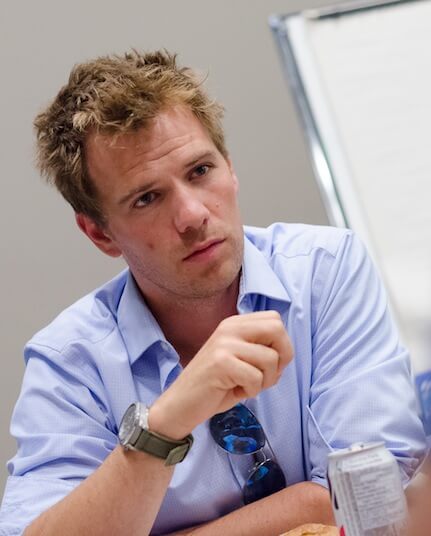
1. How does your venture help students with learning differences or learning disabilities?
At the fundamental core of LEARNstyle’s philosophy is the need to identify differentiated learning styles in order to foster student success, develop increased self-esteem and employ self-efficacy techniques.
Being a person who was diagnosed with an LD at a young age, I recognized the importance of effective and efficient self-adovcacy in order to parlay my education experiences into successes. I have come to recognize that I learn differently as opposed to being unwilling to learn, which in turn translated into the LEARNstyle gamification, platforms, techniques, and training which help students (in conjunction with educators) to understand how students learn differently.
This develops empowered students and educators who can readily assimilate self-efficacy into their day-to-day tactics, experiences and behaviours.
2. What is the biggest challenge you face as an entrepreneur working in this space?
My biggest challenge is the perpetually precarious buying cycle within the education space. There is a balancing act between creatively and technically developing viable products (based off positive feedback from the education sector), while managing finances throughout the product development cycle in order to reach completion.
It is only then that there is the ability recognize revenue by commercialization of the product(s). Within the education space, there are no opportunities to engage purchasers pre-completion instead the product(s) must be fully reviewed, vetted and finalized—consequently this can be a long process.
3. What do you see as the next big area of growth for your company?
Cloud computing for the education sector is revolutionary and will require systematic changes and updates in order to achieve its potential. As a result, LEARNstyle has become the first Canadian Google Certified training company. We are positioned for ‘blue ocean’ exponential growth in Canada as the premier facilitators for training and consulting on Google Apps for Education.
